table of contents:
Explore the timeless charm of gingham with our guide to its iconic uses. Discover creative ideas for incorporating this classic pattern into your sewing projects and unveil the elegance of gingham in every creation.
What is Vichy?
Gingham is a recognizable check pattern thanks to its regular lines and retro look. It takes its name from the French town of Vichy, where it is believed to have been popularized in the 19th century. Traditionally, gingham consists of squares of the same size and contrasting colors, most often in pastel shades. This pattern is often associated with a vintage aesthetic and recalls summer picnics and light outfits. Today, gingham is used in many areas, from fashion to interior design, accessories, and creative arts. It brings a touch of freshness, softness, and nostalgia to many creations.
The History of Gingham: From Summer Picnics to Timeless Fashion
The gingham pattern is a classic and timeless design that evokes images of summer picnics, vintage dresses, and a retro aesthetic. Its origins date back to the 19th century, when the pattern was popularized in the town of Vichy, France. Originally, gingham was a lightweight cotton fabric with a regular checkered pattern, usually in muted color combinations such as red and white, blue and white, or pink and white.
The gingham pattern has grown in popularity over the years and has become iconic for summer fashion and casual wear. It has been worn by many style icons, including Brigitte Bardot and Audrey Hepburn, contributing to its timeless status.
Today, the gingham pattern remains highly valued in the fashion industry. It is used in a variety of clothing and accessories, such as dresses, blouses, skirts, swimwear, and even home decor items. Its association with moments of relaxation, lightness, and conviviality makes it a popular choice for summer outfits and festive events.
Gingham is a timeless pattern that transcends fashion trends. Its rich history and charming aesthetic make it a classic choice for those looking to add a touch of vintage elegance to their wardrobe or decor. This pattern is also ideal for craft projects like a dog bandana tutorial , bringing a vintage and stylish touch to your handmade accessories. Whether it's for a sunny day at the park or a special occasion, gingham continues to capture our imaginations and remind us of the simple joys of summer life.

The artisanal production of gingham: from weaving tiles to elegance
The manufacturing of gingham is a complex process that gives birth to this iconic checked fabric. It all begins with the selection of high-quality threads, usually cotton, which will serve as the basis for weaving the gingham. The choice of threads is essential to achieve the soft texture and strength required for this type of fabric.
Once the threads are selected, they are dyed in specific gingham colors. Traditional colors include bright, contrasting color combinations, such as red and white, blue and white, or pink and white. The dyeing process can be done using natural or synthetic dyes, depending on the manufacturer's preferences.
Once the threads are dyed, weaving the gingham can begin. The loom is prepared by adjusting the threads according to the desired check pattern. Gingham is woven with a regular check pattern, characterized by alternating colored squares. This involves crossing the weft threads with the warp threads to create the distinct gingham squares.
After weaving, the fabric undergoes a finishing process to give it its soft texture and smooth appearance. This may involve treatments such as brushing, scraping, or polishing, depending on the desired result. These treatments soften the fabric fibers, remove irregularities, and give it a neat, uniform appearance.
Once finished, the fabric is ready to be used in clothing, accessories, or home decor. Gingham is often associated with spring and summer creations, bringing a touch of freshness and cheerfulness to each project. It can be used to make dresses, shirts, skirts, tablecloths, curtains, and many other items.
The artisanal production of gingham requires skill and precision to achieve perfect check patterns and harmonious colors. It is thanks to this meticulous process that gingham has become a timeless fabric loved worldwide, associated with a retro and nostalgic style.
Discover : the origin of denim fabric , its characteristics and current trends

The properties of Vichy
Gingham is a versatile fabric with several interesting properties. Gingham's main qualities are its soft and lightweight texture, breathability, moisture absorption, strength, and timeless check pattern. These characteristics make it a popular choice for a variety of sewing and decorating projects, bringing a touch of charm and retro style to each creation.
Softness and lightness
First of all, it is appreciated for its soft and lightweight texture, which makes it comfortable to wear. It is also breathable, which allows air to circulate through the fabric, ensuring a feeling of freshness and comfort, especially during warmer seasons.
Absorption
Due to its often cotton composition, gingham is also known for its moisture-wicking properties. It can absorb perspiration from the skin, making it an ideal choice for summer clothing or bedding. Additionally, cotton feels soft and comfortable against the skin, making it a popular choice for clothing intended for people with sensitive skin.
Resistance
Gingham also has good resistance to wear and tear, making it a durable fabric. It can withstand regular use without losing its quality and appearance. Additionally, the gingham check pattern is timeless and classic, making it easy to pair with different clothing styles and decor creations.
Ease of maintenance
In terms of ease of care, gingham is generally machine washable, making it simple to maintain. It can be ironed at a low temperature to remove wrinkles, but it's best to check the manufacturer's specific recommendations before treating it.
Uses of Vichy
Gingham can be used to sew a variety of items for both fashion and home decor. Feel free to let your creativity run wild by experimenting with gingham. You can mix patterns, colors, and textures to create unique and personalized pieces. Whether for elegant clothing, trendy accessories, or home decor, gingham offers many creative sewing possibilities.

Clothes
Gingham is often used to create dresses, skirts, blouses, shirts, and shorts. It adds a touch of retro charm and is particularly suitable for summer and spring clothing. Slip dresses, full skirts, and blouses are popular choices for gingham sewing projects.
Accessories
You can also use gingham to make accessories such as handbags, scarves, headbands, and hair bows. These pieces add a playful and colorful touch to your outfit and are perfect for adding a touch of gingham without going overboard.
Interior decoration
Gingham can also be used to create a warm, inviting atmosphere in your home. You can make gingham cushions, tablecloths, curtains, placemats, and cushion covers. These items add a rustic and elegant touch to your decor.
Children's projects
Gingham is a popular choice for children's clothing and accessories. You can sew gingham dresses, overalls, pants, bloomers, blankets, and bibs for little ones. The bright colors and checkered patterns add a cute and cheerful look to children's outfits.
Vichy maintenance
To preserve the beauty and durability of gingham, it is essential to follow proper care practices. By following these care tips, you will be able to keep your gingham in good condition and enjoy its checkered patterns for a long time. However, always be sure to check the manufacturer's specific instructions, as some ginghams may require special care depending on the material or finishes used.
Washing
Gingham can generally be machine washed at a low temperature. It is recommended to use a delicate cycle to avoid damaging the fibers. Use a mild detergent and avoid bleach, as this can alter the colors. Separate gingham items from other garments when washing to avoid the risk of discoloration.
Temperature
It's best to wash gingham at a cool or warm temperature to minimize shrinkage or distortion. Always check the manufacturer's specific instructions on the care label for exact washing recommendations.
Drying
It is recommended to air dry gingham items rather than tumble dry, as this can cause excessive shrinkage or damage to delicate fibers. Lay gingham garments or accessories flat or hang them to dry naturally.
Ironing
If necessary, you can iron the gingham at a low temperature using an iron set to the "cotton" setting. Place a thin cloth or clean cotton fabric between the iron and the gingham to avoid damaging it. Avoid ironing directly onto checkered patterns to preserve their appearance.
Storage
When you're not wearing your gingham items, it's best to store them in a cool, dry place away from direct sunlight. Avoid placing them in spaces where they could be creased or rubbed against other abrasive surfaces.
Gingham, with its iconic checkered patterns, offers a classic and timeless aesthetic. This versatile fabric can be used to create summer clothing, accessories, and home decor pieces. Lightweight, breathable, and easy to care for, gingham brings a touch of charm and playfulness to every project. Whether for a retro or contemporary look, gingham adds an attractive visual dimension to your style. Unleash your creativity and use gingham to add a fresh touch to your designs.
We offer several simple tutorials on our blog if you are new to sewing, also find us on Facebook , Instagram and TikTok !

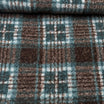
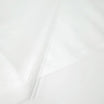
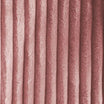
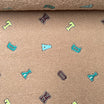
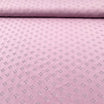
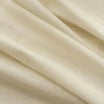

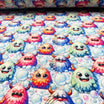
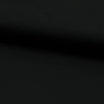
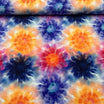
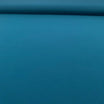
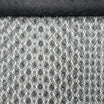
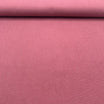
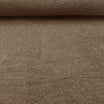

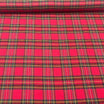
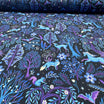
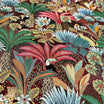
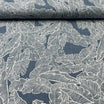
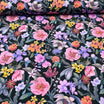
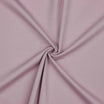
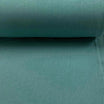
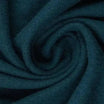
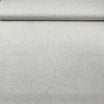
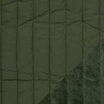
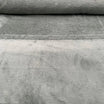
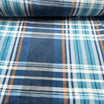
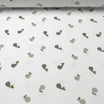
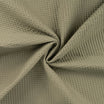
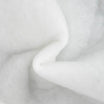
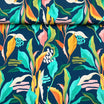
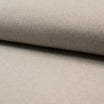
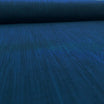
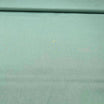











Leave a comment
All comments are moderated before being published.
This site is protected by hCaptcha and the hCaptcha Privacy Policy and Terms of Service apply.